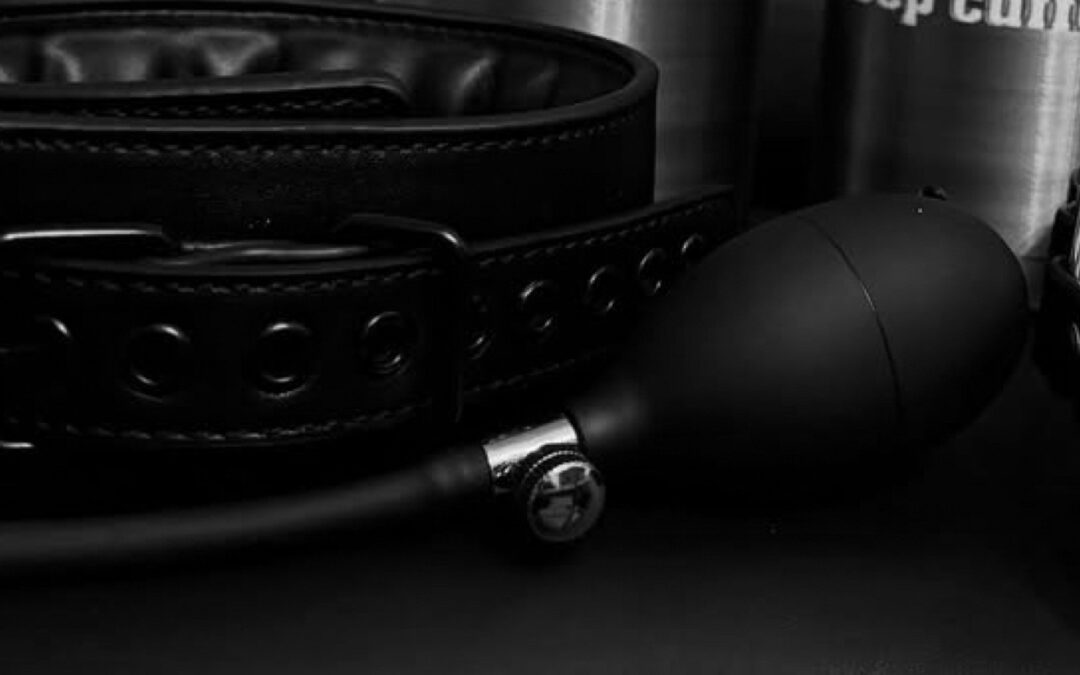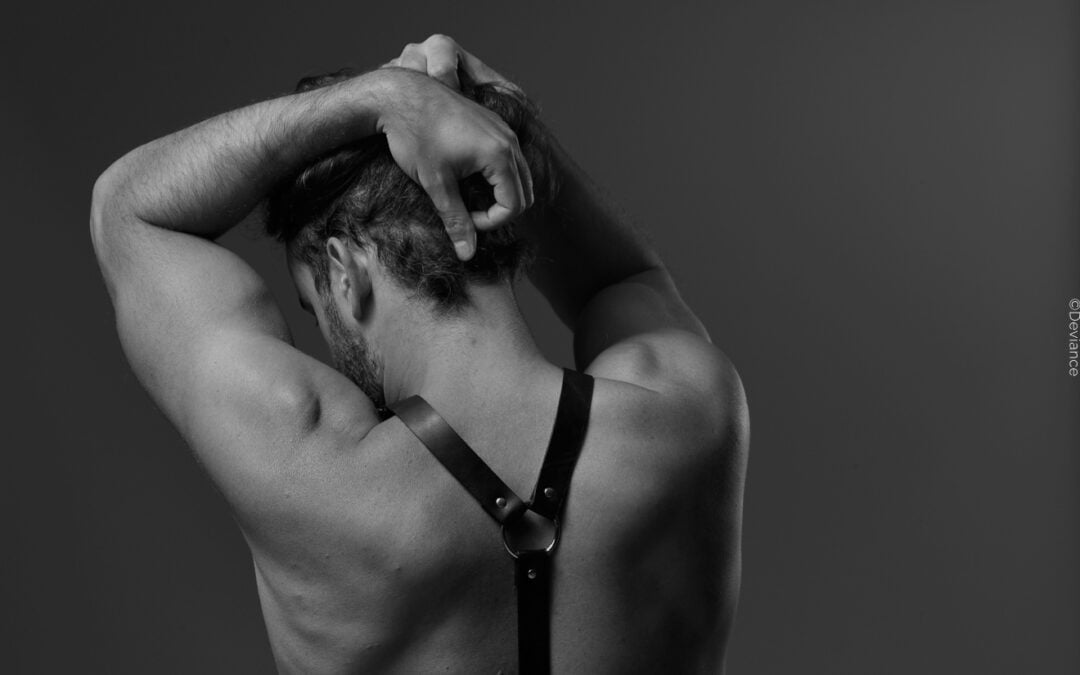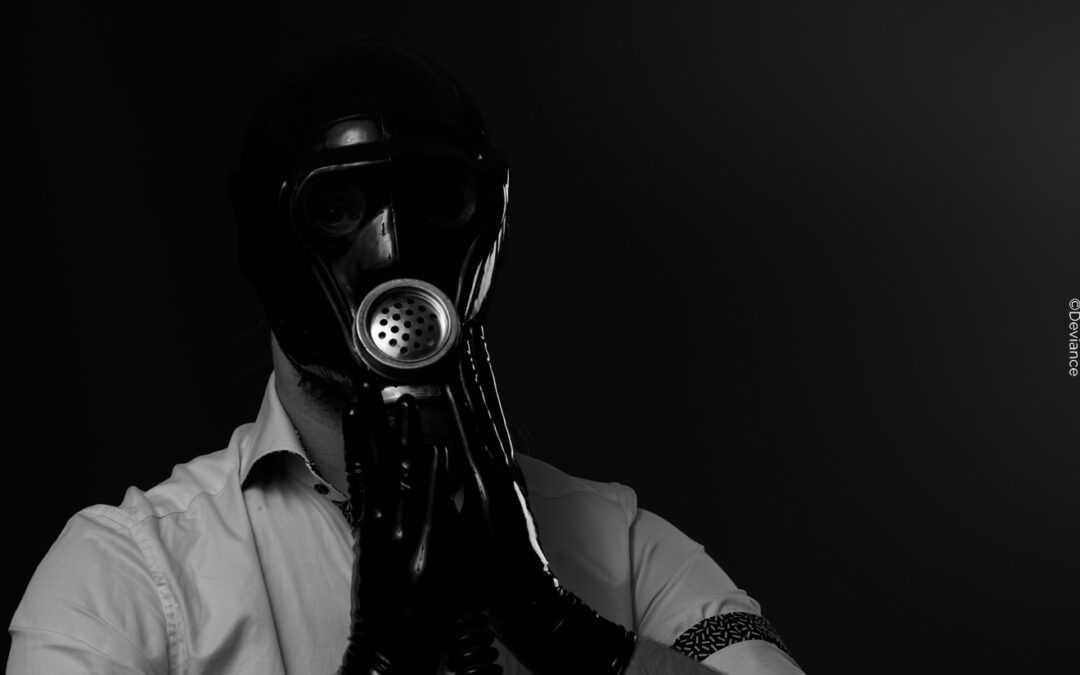What does breath play mean?
Breath play or breath control describes describes playing with the breath of the Bottom in BDSM. People who have this preference enjoy being able to breathe restrictedly or not at all and being controlled in the process. Or to exercise this control. The attraction also lies in the feeling of euphoria and anxiety that arises when there is a lack of oxygen.
Asphyxiophilia is the technical term for this. It describes paraphilia, i.e. the fetish for breath control for sexual arousal. This term is particularly widespread in specialist psychiatric circles and in case law. For a very long time, it was a clear sign of the mental illness of sadomasochism.
What is the appeal of breath play?
For the dominant person, the appeal usually lies in having control over something as essential as breathing, the life of another person. A high of trust and control.
As the strangled part, the stimulus is much more physical in many ways: breath control leads to a lack of oxygen in the brain, which creates an increased level of carbon dioxide in the blood. This in turn causes some people to release more adrenaline as well as endorphins, the so-called happiness hormones. You experience an intoxicated state, feeling euphoric, disinhibited and pain-free. Some people compare it to the intoxication of drugs.
Some people also experience dizziness, the blood rushes in their ears and their body temperature also rises. Especially in combination with sexual acts, this condition can be additionally arousing. After releasing the breathing reduction, gagging, crying and coughing may occur. A feeling of release that many people also find exciting.
In addition to the physical component, the strong power dynamic also plays an important role in breath control. On the other hand, these types of play can also cause strong feelings of dependency and/or anxiety, almost fear. Being at someone’s mercy is a particularly intense form of submission and accordingly creates a strong sense of attachment to the person performing the act, usually a dom or top.
This can become even more intimate if you breathe in and out deeply together after or during the breath play. You can also breathe together after the session to wind down. The association with free breathing together is very intense.
What should I look out for during breath play?
Breath play is not a practice that should be practiced without sufficient experience or prior knowledge. It is not just edge play, but a game with your own life. If breath play is performed incorrectly or poorly, it can lead to injuries and long-term damage.
As a general rule, never perform breath reduction alone and/or on yourself. Auto-erotic asphyxia, i.e. breath reduction performed on oneself, causes many injuries and even deaths every year. So please do not practise on yourself under any circumstances, no matter how much it turns you on. Without a controlling body, the risk is simply too high.
As soon as you want to try breath play together with another person, please attend at least one workshop on this subject beforehand. Not only BDSM seminars are suitable for this. Martial arts seminars, especially BJJ (Brazilian Jiu Jitsu), also use well-founded, practice-oriented and safe techniques. Before a session, find out all you can about medical risks and the physical condition of your partner. Always dial the emergency number before a breath play session.
As you can see, breath play is dangerous. Therefore, there are many other things to consider apart from emergencies:
- Consent: Before you play with each other, talk explicitly about the consent to breath play and the framework conditions.
- Dangers and techniques: Decide on a technique together beforehand that you feel comfortable with and can practice safely.
- Expectations: What feeling do you want to achieve? During which process would breath control be conceivable for you? How long should it last at most?
- Communication: As the mouth is often covered during breath play, it makes sense to agree on clear hand signals. Therefore, try out how you can communicate “dry”.
- Sometimes you have to adapt techniques or change positions. Be open to this communication too.
- Establish not only a safeword but also a safety gesture that clearly signals “less”, “more” or “stop” non-verbally.
- Talk about aftercare.
- Have a phone ready for an emergency call.
- If the person faints, place them in the recovery position and check their breathing. If the person does not come to within two minutes despite breathing, call the emergency services immediately.
Safeword – Breathe safely
Breath play and safety are difficult issues. Nevertheless, there are ways to make this type of play safe. In addition to the preparations mentioned above, there is of course the safeword. With breath play, however, you logically need a non-verbal safeword, a safe sign:
- Tapping, also known as tapping, as it is known from sports: Two or more taps, i.e. light blows with the hand or legs against the body of the person exercising control, so that they perceive the gesture.
- An object that can make noises and can be dropped or pressed when needed: A bell, squeaky duck, dog toy or similar. These can be pressed or shaken. The squeaker is particularly useful as it can be held down and then simply released when the air becomes less. It therefore does not have to be actively moved.
- Make body contact or stretch out a body part: If body contact is lost or the body part, usually an outstretched arm, drops, this signals a stop. This method can be particularly effective when a chokehold is applied from behind.
What can breath play look like?
There are various ways in which breath control can be practiced. Basically, breath control means not only preventing breathing, but also making it more difficult to breathe.
You can use your own body alone to influence the air supply in very different ways. Queening and kinging, i.e. very dominant oral sex, are one possibility. Covering the nose and mouth, either with the hands alone, but also with the thighs or chest, is common. Leather or latex gloves can also be used for this purpose.
Breath control without equipment
Breathing can also be controlled in a completely different way than you might think at first. For example, breathing together is a popular way of connecting with each other in many forms of mediation and tantra. However, breath control can also be given as a command, completely without physical influence, for example by the Dom forbidding the submissive person to breathe or specifying that they only breathe together, only take particularly deep and long breaths or only short breaths. Or the dom holds their breath and the sub has to follow suit.
There are other variations in connection with types of play. For example, a vibrator is held against the sex for as long as the air is held. Another scenario would be, for example, that a candle is placed in front of the sub’s face. If this is “exhaled”, then a punishment follows.
There are some people who also like to feel the dominant person’s breath. For example, they can breathe directly into the mouth so that only stale air is breathed. Some dom:mes fill their breath into balloons and then let the submissive breathe through them. This type of play is often combined with the smoke fetish, the preference for smoking.
Breath play with equipment
Wearing very tight clothing is also suitable for restricting breathing. Corsets are very popular for this purpose, as is wrapping the upper body in fabric, rope or foil. The freedom of movement and the volume of the inhalation are then reduced to the space provided by the material. Collars or neck corsets can also make inhalation more difficult.
Taping or covering the mouth with bondage tape or adhesive tape is also popular. There are also inflatable gags that close the mouth completely. When using gags or ballgags of any kind, however, it is important to pay attention to the saliva. When lying on their back, some people cannot swallow with their mouth open or quickly choke.
Choking
One of the best-known forms of breath play is choking. Feeling another person’s hand on your neck is arousing for many and expresses dominance. However, there are many wrong approaches to this method.
The neck offers many risk zones, as this is where the carotid arteries, trachea and spine run. In other words, all sensitive organs. Contrary to what you see in many films, “safe” choking does not involve simply applying strong pressure to the front of the neck. This is where the windpipe is located, which should never be subjected to strong pressure. You should also never use your own body weight to increase the pressure when a person lying on their back is being strangled. The risk of causing serious damage if you lose your balance at the wrong moment is simply too high.
A basic distinction is made between air and blood choking, i.e. squeezing the windpipe or applying pressure to the carotid arteries and vagus nerve. Regardless of whether this practice is performed by hand, with a belt, scarf or rope, it is extremely dangerous. In practice, there are often mixed forms, which makes the exact consequences difficult to calculate.
Air choke
In air choking, pressure is exerted on the trachea, the windpipe. It consists of cartilage tissue and ligaments and is therefore very sensitive. It also contains the larynx, which can be crushed or injured. A crushed trachea can be life-threatening. A crushed or broken larynx can make a tracheotomy necessary. A procedure that is often shown in movies, but is complex and difficult to perform in real life. This type of choking should therefore be avoided. Even slight pressure can lead to symptoms that can last for several days, such as a raspy voice, hoarseness, coughing and difficulty swallowing.
Bloodchoke
In bloodchoke, pressure is exerted on the sides of the neck. This is where the carotids (the carotid arteries) and the vagus nerve are located. Pressure on these triggers the carotid sinus reflex. The result is a feeling of lack of air, dizziness and light-headedness, and even fainting. However, the carotid artery must never be squeezed completely, as a lack of blood in the brain for even a few seconds can lead to potentially lasting damage.
Techniques such as the rear naked choke (an arm around the neck from behind), the guillotine (similar to a “headlock”) and the triangle choke (the head of the strangled person between the arm of the strangling person and a leg or arm) are somewhat safer than choking with the hand. Nevertheless, it is particularly important to familiarize yourself extensively with the correct technique and its application.
Extreme forms of breath play?
Breath play is a type of play that can be practiced in many different ways. Some of them are very extreme, require certain equipment and are definitely not beginner-friendly. The practices mentioned here should only be carried out with comprehensive instruction and appropriate safety precautions.
Plastic bags or foil
A plastic bag over the head is also a familiar image from movies and television. The plastic, which is placed over the face and sucked in by the mouth and nose, quickly closes the airways. The visual, haptic, psychological and physical impression is right. If you let out a little air, you might even be able to take one or two shallow breaths. But plastic bags are incredibly dangerous because they cannot be controlled. You can rarely estimate how much air is actually left. Processes such as taping or wrapping the bag at the bottom and opening it again can also take a long time. The person being recorded can faint during this time and vomit into the bag, which can be extremely dangerous. The same applies to foil wrapped around the head or mouth and nose. Without fixation, Sub can at least tear the bag and let air in even in an emergency.
Masks
Latex or gas masks are very popular with Fetishists, for whom the look, feel and material of these masks are essential in addition to the ability to control breathing. The air supply is prevented or reduced by covering tubes or openings. Many of these masks often also offer a form of sensory deprivation, such as hearing or sight. The attraction of masks with a tube is that you can take a few last breaths through it before you have to breathe more and more shallowly until it is no longer possible. In contrast to other means, the motor function of the mouth and nose is also restricted, meaning that facial expressions and gestures are often no longer clearly recognizable. Here it is particularly important to agree on non-verbal safewords.
Waterboarding
Waterboarding is not only found in James Bond, it is also a very dangerous practice in BDSM. There are several ways to carry out waterboarding, for example by submerging a person or their head in a basin or bucket of water. Covering the mouth with a wet cloth also makes breathing extremely difficult. Often this is also doused with water, which completely prevents breathing. Another option is a continuous stream of water on the airways. But beware! Waterboarding is very dangerous and can lead to panic attacks and lasting trauma. Water in the lungs is also life-threatening. It is not for nothing that waterboarding is known as a method of torture and should therefore not be approached naively or carelessly.
Fainting games
There are people who want to be played to the point of fainting. These are absolutely edegeplay scenarios that must be played with great care and caution. Fainting, even if it only lasts a few seconds, is a protective reaction of the human body to survive. If someone faints, this means that their life is in acute danger.
Legal perspective
Unfortunately, such dangerous practices bring BDSM and German legislation into conflict. If breath play leads to permanent damage or death in the worst case, this practice is considered immoral in the eyes of the law. Even if both sides approve of this form of play, this does not always absolve the person performing it of all blame. Especially when it comes to one of the more extreme forms of breath play. It is therefore particularly important to be fully informed and act safely.









